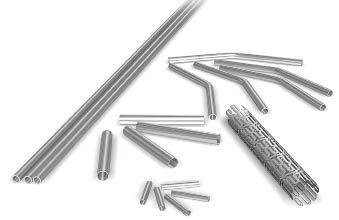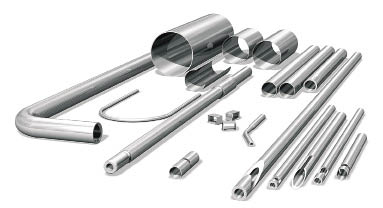When working with metal tubing suppliers, attention to a few key details can ensure your medical device design stays on time and under budget.
1 Watch tolerance stacking. When you are figuring tolerances in terms of upper and lower extremes, also take into account tolerance stacking and the effects of secondary operations and ID clearance issues. Accounting for these factors in a design prior to prototyping will save money and time.
2 Don’t use unqualified input. While the Internet is a source of information, not all the information on it is accurate. Vendors and suppliers may not be rigorous in ensuring that the information on their sites is up to date. Said Lance Heft, CEO of International Tube, “The trouble with the Internet and even some reference books is that they may encourage the selection of an exotic material that could be unavailable or inappropriate for the application. Your supplier should be able to explain such issues.” It is helpful to fully understand the different manufacturing methods of tubing and how this relates to the performance of the end product.
Many tube designs and configurations include fabrication challenges such as metallurgy, tube formation and configuration, tensile strengths, cost, structural characteristics, and coatings. These may include bulges, flairs, and swages that are difficult to perform, yet may be vital to the performance of a device. So, it is important to confirm that your supplier has experience with such configurations.

As the FDA continues to become more involved in the manufacturing process, it is imperative that the quality inspection methods are correlated between the vendor and customer, and that the customer is educated in the standard tube mechanical properties and functional performance specifics for their device.
3 Under- or over-estimating requirements. Qualify prospective vendors according to their experience with an application to validate tubing requirements. For instance, small-diameter tubing is becoming more important because medical devices continue to shrink in size. “This requirement creates a need to put more materials or devices through a smaller ID tube,” Heft said. “When you put multiple devices, such as fiber optics, other tubes, guidewires, and even stents, through a narrow laparoscopic or endoscopic tube, for example, you get a ‘stack-up’ of tolerances, which makes it crucial that the ID is accurate, the inner surface smooth and without burrs, roughness, or debris which could cause damage to the materials, and that the instrument is engineered so that it does not develop kinks.”
This can affect material choice too. Supplier knowledge can be invaluable. Noted Heft, “It’s scary to say but it has happened to us that a customer asked for 316 or 304 stainless, and then we find out that they are using it for an implanted device. That is not implant-grade material, so we advised them of their options.”
4 Don’t take quality correlation for granted. Check for the appropriate quality tests and inspections. A thorough supplier of metal tubes will alert you to potential design problems before they become product problems. They will know how different alloys are produced and fabricated and the various mechanical and chemical properties that are available from different materials, as well as what fabrications can be realistically expected and how far the envelope can be pushed.

Quality credentials may also be important. Many suppliers of medical device components are ISO-9001 certified. But when a vendor has ISO-13485 certification, that credential indicates a supplier has very high quality standards, not only in products, but also systems.
5 Turnaround traps. Many suppliers can turn around prototypes in days or a week or two. However, in some cases suppliers take orders without knowing how quickly they can respond, estimating volume deliveries in eight weeks that in reality will take three to six months.
International Tube
internationaltube.com
::Design World::




